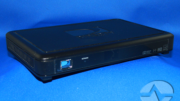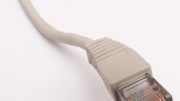Yeah, the easy answer is… because there are people hired to tweak the lighting and the color and everything goes through some sort of filter in the computer. There’s more to it than that. Not only does a properly calibrated TV show you a picture that’s both realistic and beautiful, but most tablets simply look better than a TV. There has to be some explanation.
The answer, as Shakespeare once said, is not in our stars but in ourselves. It goes back to basic biology. Your eyes aren’t really designed to see television screens. They’re designed to see real life, of course.
Real life
Real life looks real to us, but it’s not always as bright or as clear as it could possibly be. Compared to television, real life can seem a bit drab.
When you look out at a real-life nature scene, you’re looking at reflected light. Light starts out at the sun, hits the objects around you and bounces toward you. That light goes into your eyes, but no matter how perfect an object is, it doesn’t reflect back 100% of the light that comes its way. At best you get a small fraction of it.
In nature, almost all objects come to your attention via reflected light. The only natural light sources you’re likely to encounter are the sun and a fire, and thinking back with your caveman brain, fire is actually a pretty bad thing. That’s why you’ve evolved to pay special attention to light that’s actually coming to you from a direct source. Not only is direct light more intense, it’s actually more interesting.
On the screen
Television and all mobile displays (except early e-readers) are direct light sources; they shine right at you. This has two effects: first the colors can be brighter and richer than they are in nature, since a greater amount of light comes into your eyes. Second, you’re wired to pay more attention to direct light, since in nature direct light is dangerous and bears watching.
Interestingly, there have been experiments with using reflected light for TVs and computer displays but they never quite work. Whether it’s an old-school calculator or an e-reader, displays that use reflected light never seem to capture our fancy, even though they’re a lot more energy-efficient. It’s simply because we’re used to how interesting those direct displays are and we just don’t want to accept anything less.
Interestingly, Samsung and other manufacturers now have extremely low-light TVs that should blend in with their surroundings. These TVs supposedly look like framed art when not in use. I’ve seen them in person. The effect is pretty good, but not 100% convincing in really dim rooms.
Another piece of the puzzle involves color management. You know a little bit about color management because you probably adjust the brightness and contrast of a new TV when you bring it home. If you don’t, everyone glows just a bit too much. Computer monitors tend to be a bit on the bright side by design, while phones and tablets tend to be both bright and blue, simulating a clear day.
The latest version of phone operating systems let you set a “night mode” in which everything looks dimmer and browner. The bright blue light of a phone convinces you that it still daytime, and that tends to keep you from sleeping. Which leads to one more point…
Too much of a good thing
Of course, we all know that too much direct light can cause eyestrain. Our eyes just don’t work well with too much direct light. Unfortunately, the same technologies that make things pop out on the screen also contribute to UV radiation from that screen and that’s a big part of what makes your eyes tired.




